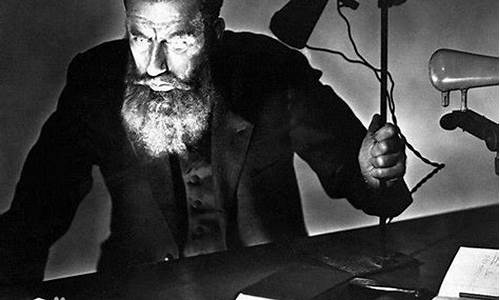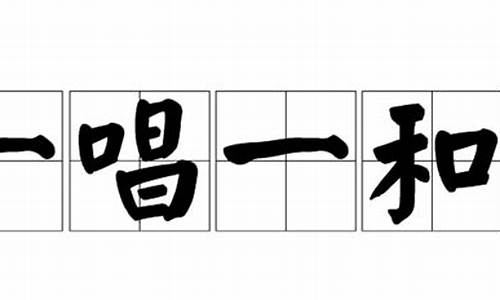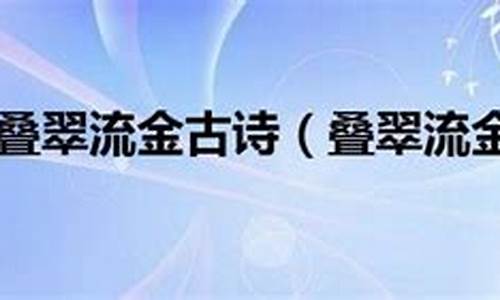您现在的位置是: 首页 > 成语大全 成语大全
伦琴英文-伦琴英文全名
tamoadmin 2024-10-14 人已围观
简介Isaac Newton 牛顿Albert Einstein爱因斯坦Wilhelm Conrad R?ntgen伦琴Ernest Rutherford卢瑟福Lord Kelvin开尔文Joseph Johu Thomson 汤姆逊Henry Cavendish卡文迪许太多了,就写这些吧伦琴是什么单位10.牛顿(1642-1726年)牛顿是一个博学的人,他对数学、光学、物理学和天文学在内的一系列学科

Isaac Newton 牛顿
Albert Einstein爱因斯坦
Wilhelm Conrad R?ntgen伦琴
Ernest Rutherford卢瑟福
Lord Kelvin开尔文
Joseph Johu Thomson 汤姆逊
Henry Cavendish卡文迪许
太多了,就写这些吧
伦琴是什么单位
10.牛顿(1642-1726年)
牛顿是一个博学的人,他对数学、光学、物理学和天文学在内的一系列学科进行了研究,在1687年出版的《数学原理》中,他为经典力学奠定了基础,解释了万有引力定律和运动定律,是世界最伟大的10位科学家之一。
9.巴斯德(1822-1895年)
对医学科学的发展做出了巨大贡献,他为狂犬病、炭疽和其他传染病的治疗提供了方法。还发明了巴氏灭菌法,使牛奶更安全饮用,他挽救了更多的生命,是世界最伟大的10位科学家之一。
8.伽利略 (1564–1642年)
创造了最早的现代望远镜之一,彻底改变了我们对世界的认识,成功地证明了地球围绕着太阳转,而不是反过来。发明了摆针和温度计,是近代实验科学的奠基人之一,为动力学和材料强度的科学奠定了基础,是世界最伟大的10位科学家之一。
7.玛丽·居里(1867-1934年)
波兰物理学家和化学家,发现元素钋和镭,并帮助将其应用到x射线领域,发明分离放射性同位素技术,她获得了诺贝尔化学和物理学奖,是世界最伟大的10位科学家之一。
6.阿尔伯特·爱因斯坦(1879-1955年)
爱因斯坦的广义相对论彻底改变了现代物理学,于1921年他获得了诺贝尔物理学奖,因为他发现了光电效应,从而形成了量子理论的基础,是世界最伟大的10位科学家之一。
5.达尔文(1809-1882年)
在被怀疑的背景下,始终坚持他的“进化论”,他收集了20多年的证据,并于1859年发表了关于物种起源的结论,恩格斯将“进化论”列为19世纪自然科学的三大发现之一(其他两个是细胞学说、能量守恒转化定律),是世界最伟大的10位科学家之一。
4.哈恩(1879–1968年)
哈恩是一位德国化学家,于1939年,他发现了核裂变。他是放射化学领域的先驱科学家,发现了放射性元素和核同质异能,他于1944年被授予诺贝尔化学奖,是世界最伟大的10位科学家之一。。
3.尼古拉·特斯拉(1856-1943年)
其在研究电磁和交流电流的领域有着举足轻重的作用,他拥有许多从电力到无线电传输等方面的多项专利,并在现代电力的发展中发挥了关键作用,现代的无线通信和无线电的基石来源于此,是世界最伟大的10位科学家之一。
2.詹姆斯·克拉克·麦克斯韦尔(1831-1879年)
在研究电磁方面有重大贡献,他在电力和动力学方面的研究奠定了量子物理学的基础。爱因斯坦对麦克斯韦说:“詹姆斯·克拉克·麦克斯韦的作品永远地改变了世界。”是统计物理学的奠基人之一,是世界最伟大的10位科学家之一。
1.亚里士多德(公元前384 - 前322)
亚里士多德是一位伟大的早期希腊科学家,他在植物学、动物学、物理学、天文学、化学、气象学和几何学等自然科学领域做过许多研究。还创办了逍遥学派,是科学的先驱者,是世界最伟大的10位科学家之一。
伦琴的英文简介
伦琴是照射量单位,1伦琴相当于在1立方厘米标准状况的空气(质量为0.001293克)中,产生的正、负离子电荷各为1静电单位。
伦琴的英文代号为R,其定义是在0摄氏度,760毫米汞柱气压的1立方厘米空气中,造成1静电单位(3.3364×10?10库仑)正负离子的辐射强度=1伦琴单位。
伦琴单位不是国际单位,但在医学等领域还是很常用的,与国际单位的换算是1伦琴单位=2.58×10-4库仑/千克。
照射量,表示射线空间分布的辐射剂量,即在离放射源一定距离的物质,受照射线的多少,以X线或Y线在空气中全部停留下来所产生的电荷量来表示。
需要注意的是,照射量只用于光子在空气中引起电离的情况,其他类型的辐射,虽然也可以在空气中引起电离,却不允许使用照射量。
伦琴射线的由来,和一位德国著名物理学家息息相关,他最大的成就就是发现了X射线,为开创医疗影像技术铺平了道路,对医学界可以说是一项创举,所以在1901年,他被授予了诺贝尔物理学奖,这项发明还影响了很多其他的重要领域。
到今天,为了纪念这位德国著名物理学家的成就,X射线以他的名字命名,在许多国家被称为伦琴射线,另外第111号化学元素Rg,也用伦琴的名字命了名。
英语mr怎么读
During 1895 R?ntgen was investigating the external effects from the various types of vacuum tube equipment — apparatus from Heinrich Hertz, Johann Hittorf, William Crookes, Nikola Tesla and Philipp von Lenard — when an electrical discharge is passed through them. In early November he was repeating an experiment with one of Lenard's tubes in which a thin aluminium window had been added to permit the cathode rays to exit the tube but a cardboard covering was added to protect the aluminium from damage by the strong electrostatic field that is necessary to produce the cathode rays. He knew the cardboard covering prevented light from escaping, yet R?ntgen observed that the invisible cathode rays caused a fluorescent effect on a small cardboard screen painted with barium platinocyanide when it was placed close to the aluminium window. It occurred to R?ntgen that the Hittorf-Crookes tube, which had a much thicker glass wall than the Lenard tube, might also cause this fluorescent effect.
In the late afternoon of 8 November 1895, R?ntgen determined to test his idea. He carefully constructed a black cardboard covering similar to the one he had used on the Lenard tube. He covered the Hittorf-Crookes tube with the cardboard and attached electrodes to a Ruhmkorff coil to generate an electrostatic charge. Before setting up the barium platinocyanide screen to test his idea, R?ntgen darkened the room to test the opacity of his cardboard cover. As he passed the Ruhmkorff coil charge through the tube, he determined that the cover was light-tight and turned to prepare the next step of the experiment. It was at this point that R?ntgen noticed a faint shimmering from a bench a meter away from the tube. To be sure, he tried several more discharges and saw the same shimmering each time. Striking a match, he discovered the shimmering had come from the location of the barium platinocyanide screen he had been intending to use next.
R?ntgen speculated that a new kind of ray might be responsible. 8 November was a Friday, so he took advantage of the weekend to repeat his experiments and make his first notes. In the following weeks he ate and slept in his laboratory as he investigated many properties of the new rays he temporarily termed X-rays, using the mathematical designation for something unknown. Although the new rays would eventually come to bear his name in many languages where they became known as R?ntgen Rays, he always preferred the term X-rays. Nearly two weeks after his discovery, he took the very first picture using x-rays of his wife's hand, Anna Bertha. When she saw her skeleton she exclaimed "I have seen my death!"
The idea that R?ntgen happened to notice the barium platinocyanide screen misrepresents his investigative powers; he had planned to use the screen in the next step of his experiment and would therefore have made the discovery a few moments later.[vague]
At one point while he was investigating the ability of various materials to stop the rays, R?ntgen brought a small piece of lead into position while a discharge was occurring. R?ntgen thus saw the first radiographic image, his own flickering ghostly skeleton on the barium platinocyanide screen. He later reported that it was at this point that he determined to continue his experiments in secrecy, because he feared for his professional reputation if his observations were in error.
R?ntgen's original paper, "On A New Kind Of Rays" (?ber eine neue Art von Strahlen), was published 50 days later on 28 December 1895. On 5 January 1896, an Austrian newspaper reported R?ntgen's discovery of a new type of radiation. R?ntgen was awarded an honorary Doctor of Medicine degree from the University of Würzburg after his discovery. He published a total of three papers on X-rays between 1895 and 1897. Today, R?ntgen is considered the father of diagnostic radiology, the medical specialty which uses imaging to diagnose disease.
英语mr怎么读介绍如下:
mr英语读音:英[mist?(r)],美[mister]。
Mr作为英文缩写和简写有多种含义。如:Mr = mister:用于男士的姓,姓名或职务之前,对于没有头衔的男人的称呼或与某种官职、头衔等。MR = milliroentgen:毫伦琴;MR = magnetic resonance:磁共振设备;MR=Mineralocorticoid receptor:盐皮质激素受体。
MR = Monitoring Report CDM:项目中的监测报告;MR =Market Research:市场研究的缩写;MR = Match Record:赛会纪录。MR = Math Review:美国数学评论;MR = Medical Representative:医药代表;MR =MILK RUN:循环取货。
MR = Mental Retardation:精神发育迟滞,智力障碍;MR = Magneto-Resistive:磁阻式;MR =人事部门或行政部门;MR=magnetorheological:磁流变;MR=Materialrequisition:材料请购文件;MR=Measurement Result:测量结果。
MR=Music Radio:中央人民广播电台音乐之声;MR=Mreceptor:受体;MR=MemoryRegiste:内存缓存器;MR=Medium-Range:中程;MR=mitralreflux:医学专业用语,二尖瓣返流简称。
例句:
1、 It's Mr. Douglas, that pestilential man.
那是道格拉斯先生,那个讨厌的家伙。
2、You've been most kind,Mr Lewis.
刘易斯先生,你真是太好了。
3、Yes, Mr. Emory. Thank you.
是这样,埃莫里先生,谢谢。
4、Mr.Penn sounds quite businesslike.
佩恩先生讲话十分专业。









